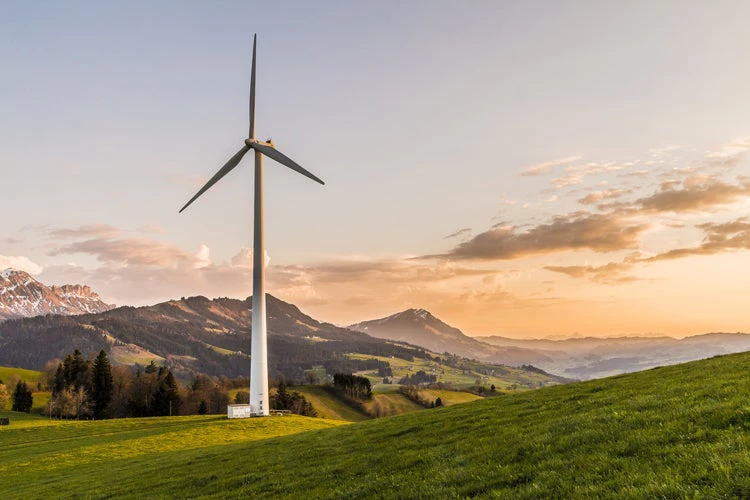Photo: Felix_Broennimann | Pixabay Creative Commons
Infrastructure is a key driver for growth, employment, and better quality of life in emerging markets and developing economies (EMDEs). But this comes at a cost. Approximately 70% of global greenhouse gas emissions come from infrastructure construction and operations such as power plants, buildings, and transport. The Overseas Development Institute estimates that over 720 million people could be pushed back into extreme poverty by 2050 as a result of climate impacts, while the World Health Organization projects that the number of deaths attributable to the harmful effects of emissions from key infrastructure industries will rise from the current 150,000 per year to 250,000 by 2030.
Does this mean we need to build less infrastructure? No. But part of the solution lies in low-carbon infrastructure.
As the name suggests, low-carbon infrastructure generates fewer carbon emissions than traditional infrastructure and helps build resilience in vulnerable countries while protecting against exposure to extreme climate change events. Crucially, in EMDEs with disproportionate exposure to climate change impacts, low-carbon infrastructure can help prevent a climate-related reversal of development gains.
Some examples of low-carbon infrastructure are:
- Railway infrastructure, which can reduce the number of carbon-emitting trucks
- Urban transport projects, such as Metros and Light Rail projects which reduce car usage- one of the more notable sources of carbon emissions
- Renewable energy projects (solar, wind, and hydropower), which have much lower carbon emissions compared to fossil fuels
What are the trends observed in low-carbon infrastructure in EMDEs?
A recent report, Private Participation in Low-Carbon Infrastructure Investment, based on data from the Private Participation in Infrastructure (PPI) Database, finds that before 2010, private-sector investments in low-carbon infrastructure were muted, particularly in the power sector. The negative impact of climate change was not seriously considered by governments, who focused purely on developing infrastructure for service provision.
Consequently, low-carbon land transport and energy projects presented a smaller potential for private investors. After 2010, favorable government policies in the form of both direct and indirect government support led to a surge of low-carbon projects. The percentage of low-carbon projects receiving government support grew from 3% before 2010 to 51% in the following years. The distribution of new project investments shifted in favor of low-carbon—prior to 2010, distribution was even (852 conventional versus 899 low-carbon), but after 2010, the number of new low-carbon PPI projects (1,915) was more than double that of conventional projects (815).
It should indeed be noted, however, that this surge in low-carbon infrastructure is driven by renewable energy projects rather than climate-friendly transport projects. Post-2010, the share of renewable energy projects has risen from about 50% to 83%. But in land transport, conventional projects or road projects still dominate, accounting for almost three-fourths of the total sectoral PPI investments.
Renewable energy—the poster child of low-carbon infrastructure?
Since energy projects form the crux of private investment in infrastructure in EMDEs, the emphasis on clean energy in reducing carbon emissions cannot be overstated. A feather in the cap for the renewable energy push was that more than half of all energy PPIs were renewables in some countries with the largest carbon emissions —notably Brazil, China, India, Turkey and Romania.
This trend was largely driven by lower costs resulting from technology improvements and competitive procurement. While the private sector has backed renewable energy projects, public sector enterprises, surprisingly, have continued to support conventional energy.
Subsidies spent by governments globally have been much higher for conventional energy sources as compared to renewable energy—in 2015, $325 billion worth of subsidies were spent on fossil fuels compared to only $150 billion for renewables. Conventional energy projects remain larger, on average, than renewable energy projects, both in terms of generation capacity and investment.
Transport projects presented a different story. Railways and urban transport projects are considered climate-friendly as they lead to lower carbon emission per unit of distance traveled as compared to roads. The share of urban transport projects almost tripled to 14% after 2010, indicating a shift in developing countries to undertake more metro and light-rail projects to efficiently cater to increasing volumes of passenger traffic. However, road connections are instrumental in EMDEs for economic integration and transporting perishables. Making the same goods available via railways would lead to higher transport costs—and higher prices for the end consumer. Road projects continued to garner almost three-fourths of the land transport investments in spite of a slight decline post-2010.
A shift towards low-carbon is happening, but the pace needs to pick up…
Over the last 15 years, there has been a focused effort to minimize or even reverse the threat of climate change. Governments have provided support to climate-friendly projects while private investors have taken the plunge by investing significant capital in such projects, particularly in EMDEs. A shift in the allocation of resources from carbon-intensive to low-carbon infrastructure is visible, but the efforts need to be intensified, particularly in land transport, if we aim to meet the goal of limiting warming to two degrees by 2050.
As the duel between humanity and the adverse impacts of climate change heats up, low-carbon infrastructure is proving to be a powerful weapon.
The PPI Database is a product of the Infrastructure, PPPs and Guarantees (IPG) Group and is managed by the World Bank Group Singapore Hub for Infrastructure and Urban Development. It is the most comprehensive database of private investments in infrastructure in the developing world. This endeavor on Low-Carbon Infrastructure was carried out by the PPI Database team comprising Deblina Saha (Task Team Lead) and Akhilesh Modi.
Related Posts:
2018: Are we ready to commit to building resilient infrastructure?
Fighting climate change with green infrastructure
Green sea transport: creative approaches for environmentally friendly shipping



Join the Conversation